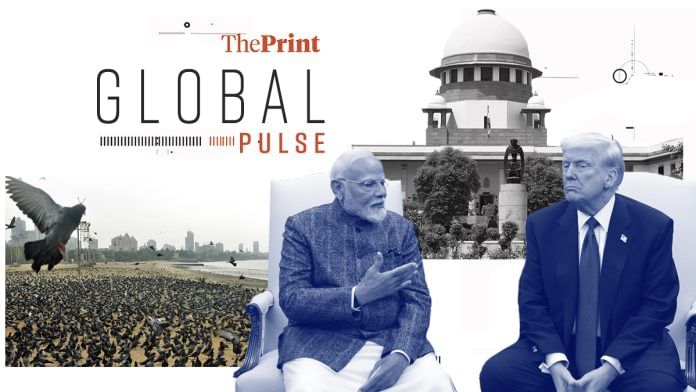New Delhi: The Economist, in an article titled Humiliation, vindication—and a giant test for India, takes a deep dive into the collapse of the India-US relationship and lays out how Prime Minister Narendra Modi should respond to the US President’s tariffs and embrace of Pakistan.
Donald Trump’s “humiliation” of India comes in two distinct “flavours”, it says, mentioning the hefty tariffs and “Mr Trump’s love-in with Pakistan” that has “undone 25 years of diplomacy”.
“For America to alienate India is an epic mistake. For India it is a moment of opportunity: a defining test of its claim to be a superpower-in-waiting,” notes the magazine.
Referring to Trump exploring deals with Pakistan, the article says “America’s failure to support India on a core security interest and decision to punish it over trade has shattered trust among Indians”, noting that since 2004, US presidents have welcomed India as a rising democratic power.
“Its $4trn economy and $5trn stockmarket dwarf those of Pakistan, wracked by instability, debt crises, terrorism and dependence on China,” it says, adding “this is a giant own-goal for America’s interests”.
An opinion in The Washington Post also terms Trump’s India tariffs as “a reckless and unnecessary assault on one of America’s most vital strategic relationships”.
India is not just a friend but indispensable to America’s strategy in Asia, says the letter to the editor by a reader.
“Trump’s policies are a strategic blunder. But the United States can correct its mistakes. Both sides must invest again in shared values, shared prosperity and shared security to maintain a partnership in the long term,” it adds, asserting that Trump should take cue from New Jersey Governor Phil Murphy, who will lead a delegation to India next month. The reader in question is a member of Murphy’s New Jersey-India Commission.
In Financial Times, Krishn Kaushik points out that there are few things as arduous as navigating the Indian judicial system.
While every government has tried to reduce the backlog, he says, the government itself is “the largest litigant clogging up the system”––and the vast majority of the backlog comprises land disputes.
Centre for Policy Research expert Namrita Wahi classifies land disputes in three categories: people vs people; people vs state; and state plus people vs people, explains the report.
“In this final category are cases in which the government works with corporate groups to take land, such as the proposed redevelopment of the Dharavi slum in Mumbai by the Adani Group,” it says, mentioning the legal concept of “the process is the punishment”, which “captures the agony of seeking resolution for a land dispute in India”.
Meanwhile, The New York Times focuses on the row over restrictions on pigeon feeding in Mumbai which, Suhasini Raj and Yan Zhuang write, has exposed “cultural and religious faultlines in India’s largest cities”.
Last month, Maharashtra closed dozens of kabutarkhanas (feeding spots for pigeons) across the city––leaving feeders bereft. “At one demonstration this month, protesters angry over the closure of a kabutarkhana clashed with the police. They tore down the tarp that officials had covered it with and scattered birdseed for the pigeons, the local news media reported. The protest was hosted by a coalition of Jain organisations, said Muni Nilesh Chandra Maharaj, a Jain monk who was there,” reads the report.
“Our religion says it is fine to pick up arms to protect the religion,” the monk is quoted as saying. “Our hunger strike will be that weapon.”
No article on pigeon culture is complete without a DDLJ (Dilwale Dulhania Le Jayenge) reference, and the NYT report complies by mentioning the pigeon-feeding sequence from the film, ‘The Big-Hearted Will Take the Bride’.
(Edited by Nida Fatima Siddiqui)
Also Read: Trump’s shifting stance on tariffs has left India confused; and India’s ‘class of stateless people’




